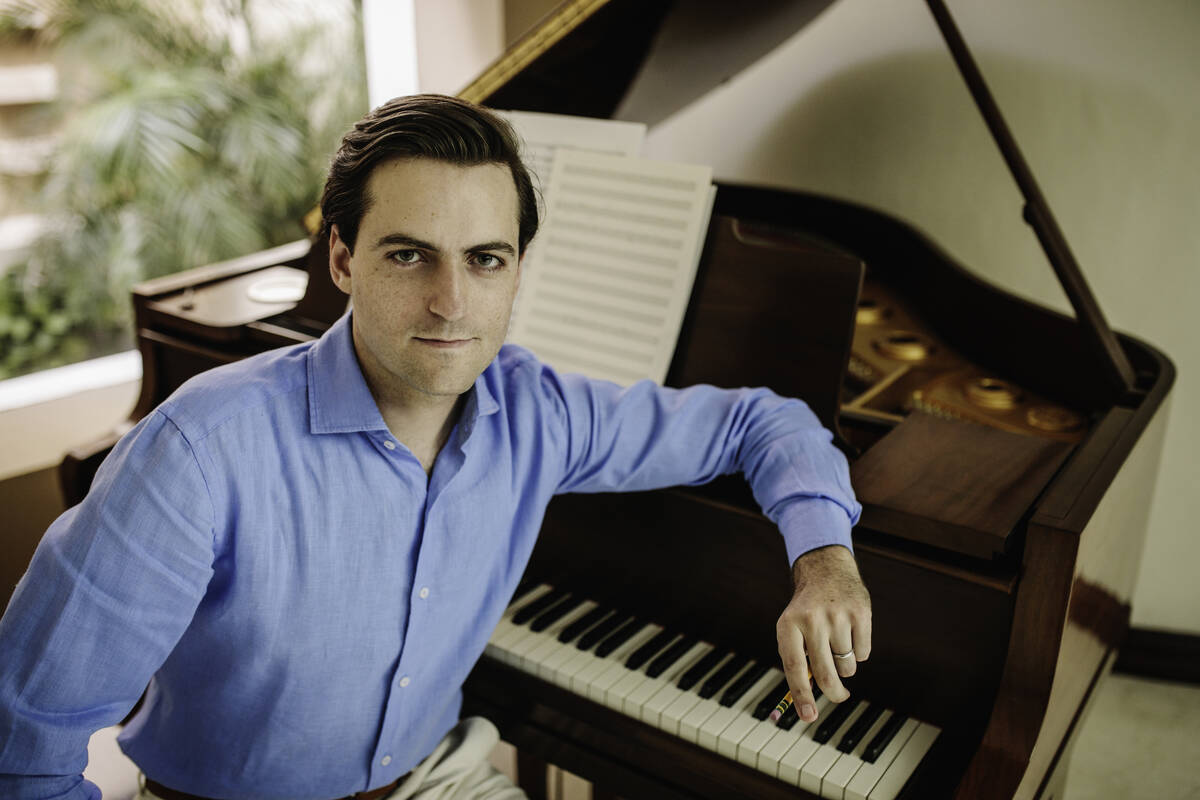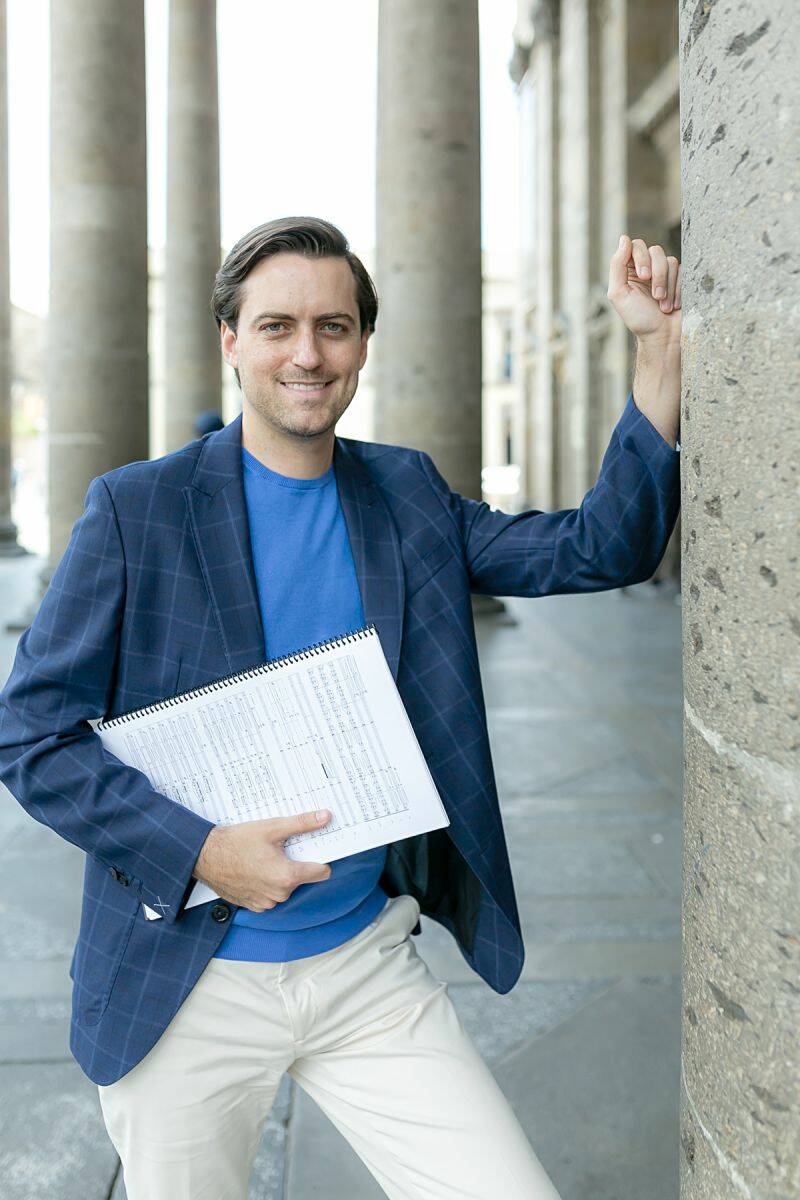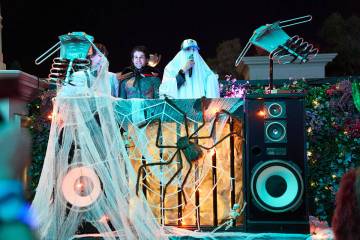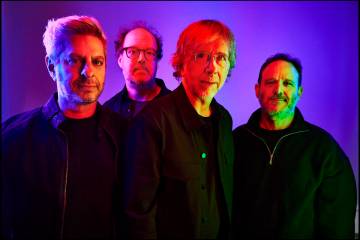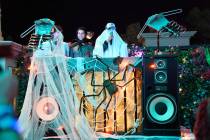Las Vegas’ diversity celebrated in ‘MeChicano’ symphony piece
With new music, Juan Pablo Contreras is speaking a new language.
The Mexico-born composer who lives today in Los Angeles has collaborated with conductor Donato Cabrera and the Las Vegas Philharmonic for an original piece, “MeChicano.” The 12-minute orchestral composition will premiere at 7:30 p.m. Saturday during the Philharmonic’s season finale, “Beethoven and Contreras,” at The Smith Center.
Contreras was led to the Philharmonic through New Music USA’s Amplifying Voices program. The initiative engenders inventive collaborations between classical composers and orchestras. Contreras explored Las Vegas’ musical and cultural climates, working with Cabrera and individual musicians to develop the symphonic piece. “MeChicano” is a mash of “Mexican” and “Chicano.” The composition conveys the spirit of communities living on the “edge effect,” where geographic and socioeconomic characteristics overlap to create uniquely diverse subcultures.
Many of these towns and cities are on the U.S.-Mexico border. But many, such as Las Vegas, are a mix of diverse environmental patterns and ethnic groups despite their inland location. “MeChicano” will be performed with a total of six orchestras across the country, with Las Vegas the first. The others are the Richmond (Va.) Symphony, Louisiana Philharmonic, California Symphony (which Cabrera also conducts), the Tucson Symphony Orchestra, and Fresno Philharmonic.
Johnny Kats: Let’s roll back to the start of this project. How did you become a collaborative partner with our Philharmonic?
Juan Pablo Contreras: The Philharmonic kind of applied for this opportunity with my name in mind. Basically, this is a program that’s trying to get more works by, as they call it, underrepresented composers, on the concert stage. We are all looking for more equality, more voices from diverse backgrounds being heard in the orchestra world.
Underrepresented, because of your background, and also not many living composers’ work is being performed by major symphonies, right?
Our world is dominated by European composers, or even dead composers. Not always, but that’s always the challenge with us classical, living composers. We have to compete against the dead composers, and the living composers, and there are very few opportunities to have our music premiered.
How did you educate yourself about Las Vegas, to have a sense of the music that would best represent the city?
I made three trips to get to know the community, and it was also important to get to know the musicians who were going to premiere the piece. I did a lot of workshops with them, getting to know their styles, what kind of music they like, how they sound best.
We have had a lot of multi-ethnic influence in original music in Las Vegas, and around the city in the live music venues. You’ve seen that, too, I’m sure.
Yes, and this goes far back. In doing research about Vegas and some other cities, I learned that in the 1980s, when Mexicans started to migrate quite a bit to the U.S., the first thing that they did to find a sense of identity was to organize these Saturday night dances. There would be a dance band, or a swing band, where they played a lot of genres. They played some Mexican music, but also started to blend the Mexican music with American styles, such as rock ’n’ roll, R&B, pop, and develop an entire new type of music. I really liked this idea of of like how music was one of the catalysts that allowed Mexican Americans to find their identity.
But we haven’t seen this type of art developed by orchestras. Why do you think it is that Mexican music has not been transferred to a symphonic format?
That is a great question. I think because it is such a musical challenge, which I have welcomed for this piece. One of the solutions that I found is one of the percussionists is going to be sitting down on a drum set that is a lot of different kinds of drums that sound, in my opinion, Mexican American. We have a set of three drums called the roto toms that are very high-pitched and are instruments. There are many instruments you can use in the orchestra that have a traditional sound.
The way you use musicians has to be different with this style of music, too, I expect.
I wrote it with them in mind, because they can play a lot of the tricky solos. I wrote a drum set solo, a tuba solo, a French horn solo. And I worked on all of them, with the players. I know that when we get to the first rehearsal, we’re actually set up for success and things are going to run smoothly.
Did you say a tuba solo?
Yeah, yeah, it’s very rare.
Seriously, the last time I heard a tuba solo was at the Hofbrauhaus, the German beer garden here in Las Vegas.
Ha ha! Yes! So, in Las Vegas the collaboration was intense and very personal … . This concept of Amplifying Voices was created because we do need more, different kinds of voices writing for the orchestra.
John Katsilometes’ column runs daily in the A section. His “PodKats!” podcast can be found at reviewjournal.com/podcasts. Contact him at jkatsilometes@reviewjournal.com. Follow @johnnykats on Twitter, @JohnnyKats1 on Instagram.



